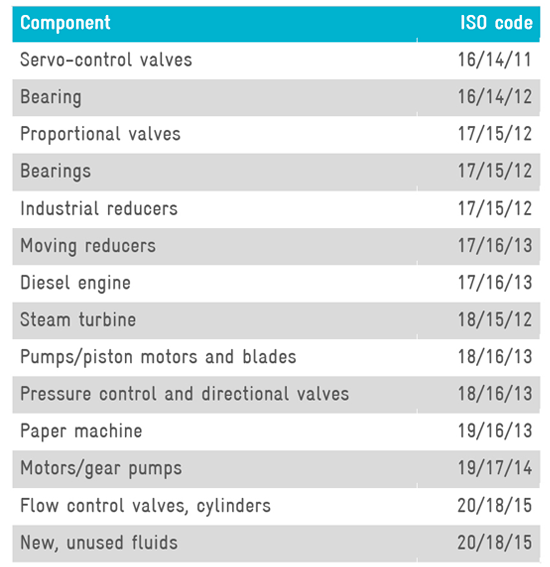
Interpretation of the results
Once the industrial oil sample has been analysed, if the ISO code 4406-99 features a high value, the particle content is also high, and very low if the oil is clean.
Some machinery manufacturers propose ISO code specifications, others demand them in order to validate the warranties.
Suppliers of bearings, turbines and hydraulic systems are increasingly interested in specifying a cleanliness level for new oils and those in use. This often means setting forth cleaning processes for new oils prior to adding them to the systems in order to meet the specifications.
As a result, filtration processes for oils in use have been developed in order to maintain suitable cleanliness levels. In any case, any variation of the ISO code must be investigated because it could indicate an anomaly.
Another less common aspect and one which is even less developed, is the interpretation and monitoring of the values obtained for each range of particle sizes, enabling investigating anomalies or root causes of faults in the lubricated systems which can be corrected in advance even before the fault occurs.
Required cleanliness grades for different machines
Many manufacturers of hydraulic and bearing equipment specify the optimum cleanliness level grade required for their components given that the components that operate with fluid subject to a high degree of dirt reduce their service life.
Table 1 provides guidelines as to the cleanliness grades recommended for different components. This information is useful when selecting the desired cleanliness grade.

Table 1. Cleaning of the fluids required for typically lubricated components

Table 2. Condition of the fluid depending on the ISO code
Lubrication Management recommends analysis ASTM D 6786 Suspended solid particle count (ISO 4406) to determine solid contamination in the lubricant oil.



